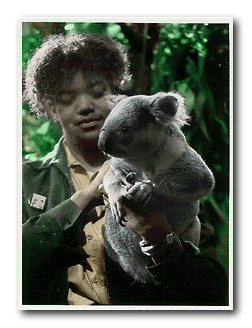
Lincoln Park ZooKeeper in Australia with Australian Koala Foundation.
April 22, 1996-- Pearl Yusuf, Animal Keeper for Lincoln Park's three Queensland koalas is working on-site in the Australian outback for the next two weeks. Pearl is the Zoo's representative in a project organized by the Australian Koala Foundation (AKF) and the Zoological Society of San Diego to develop a computerized Koala Habitat Atlas for this unique and threatened animal.
